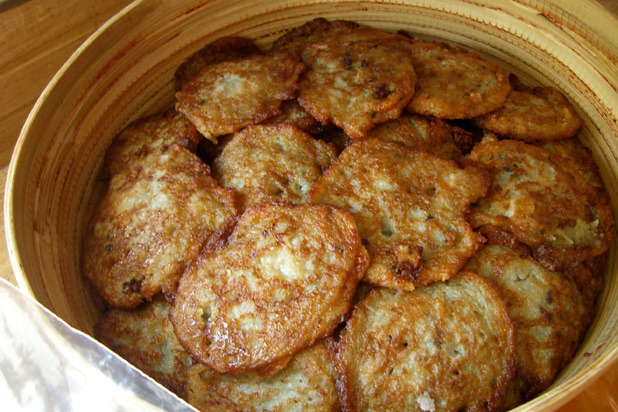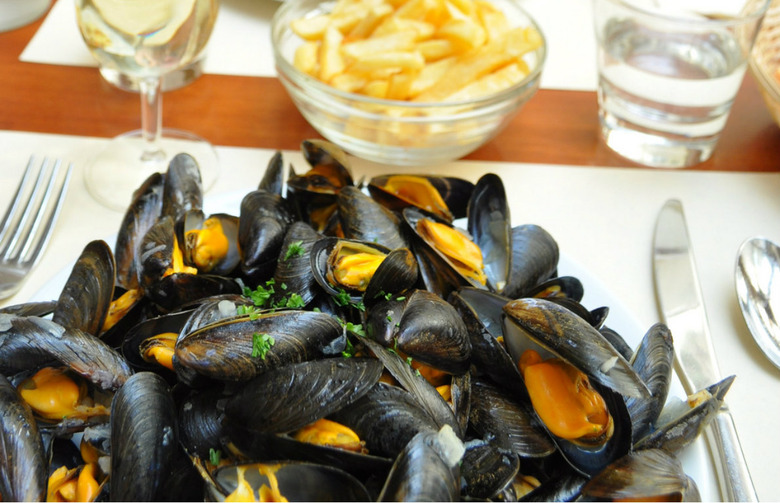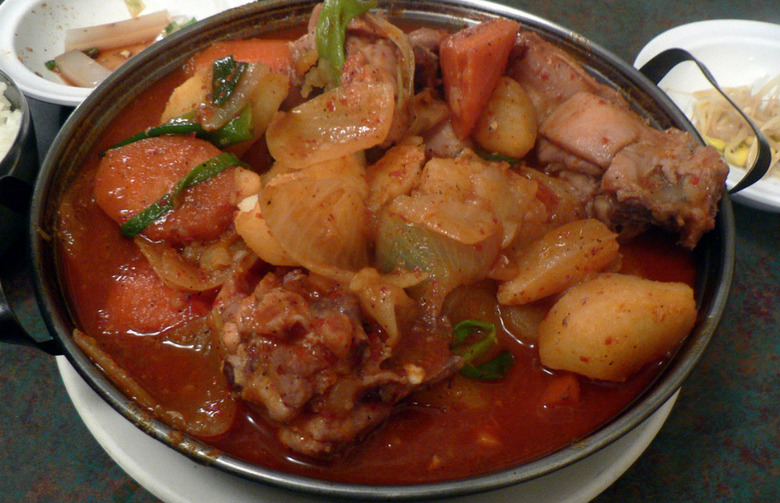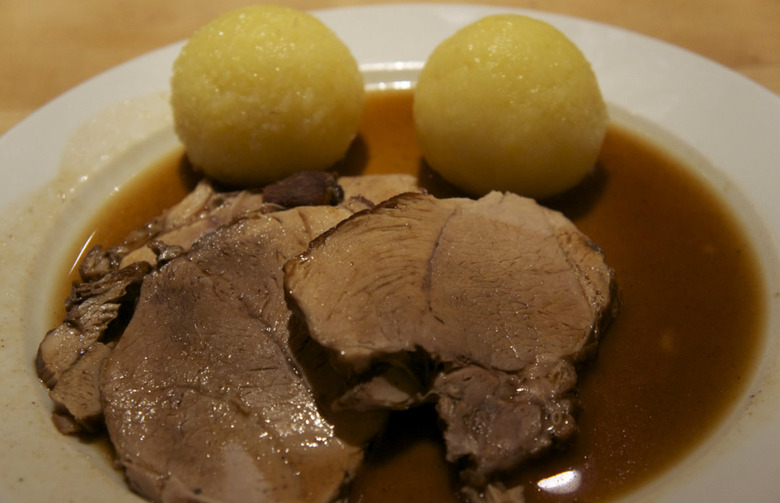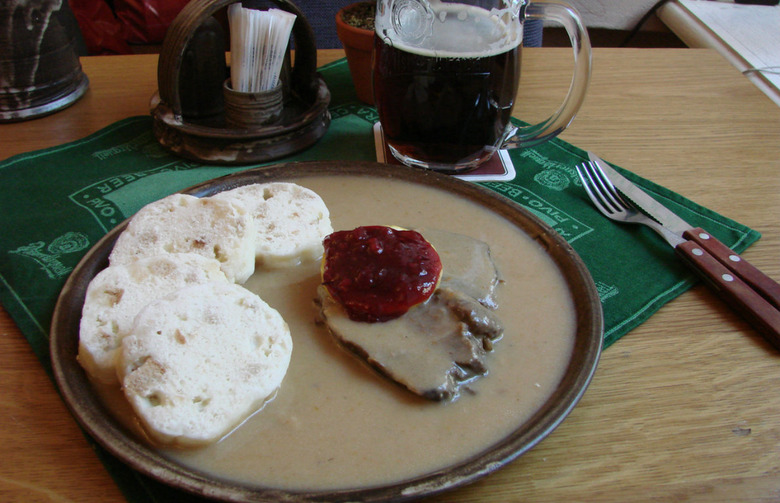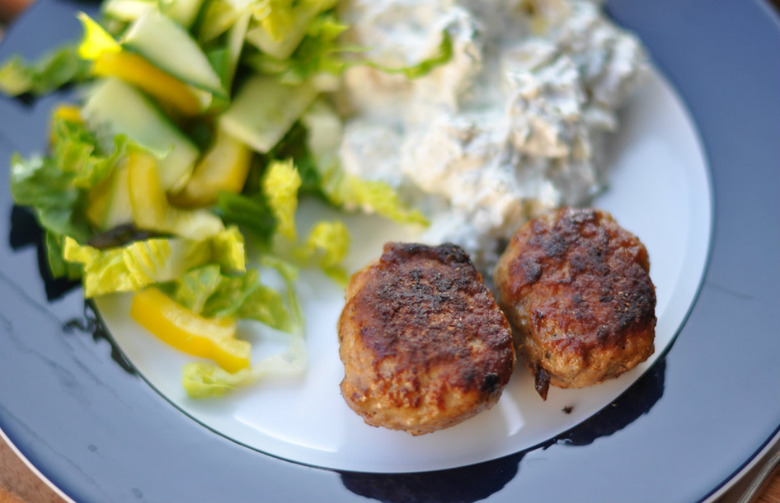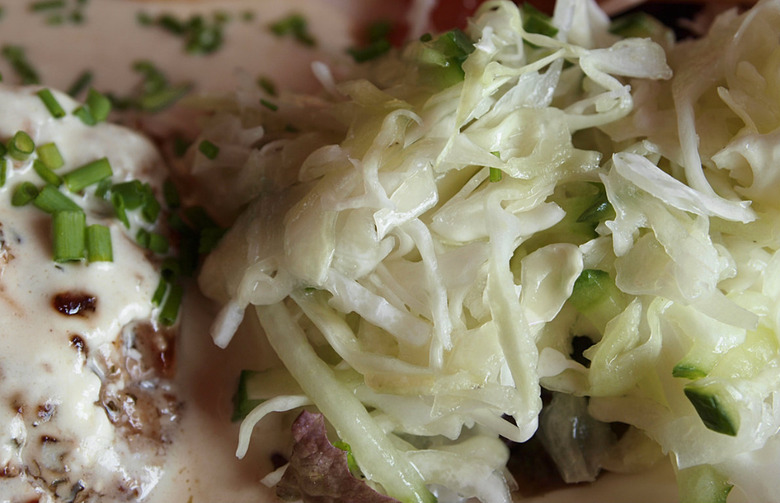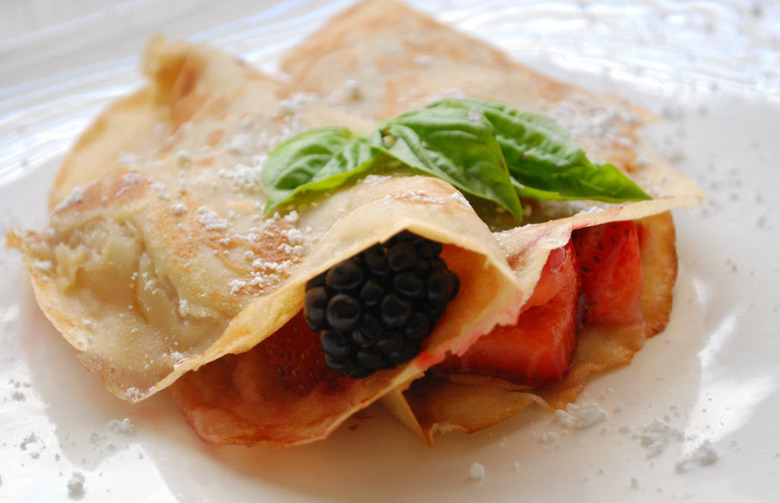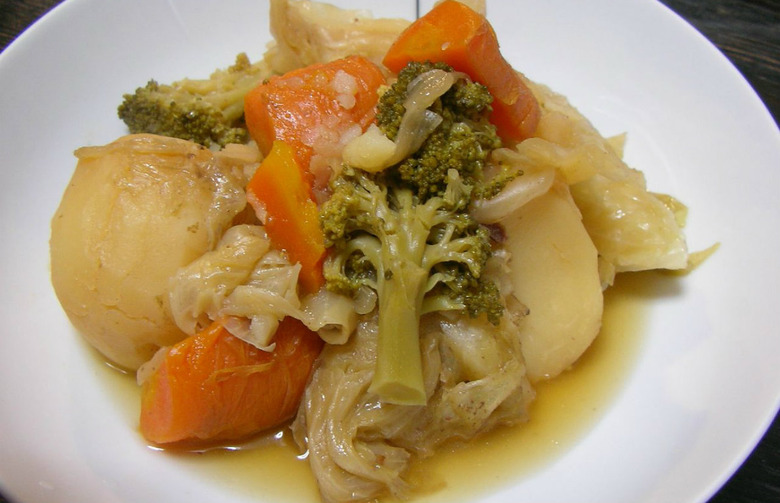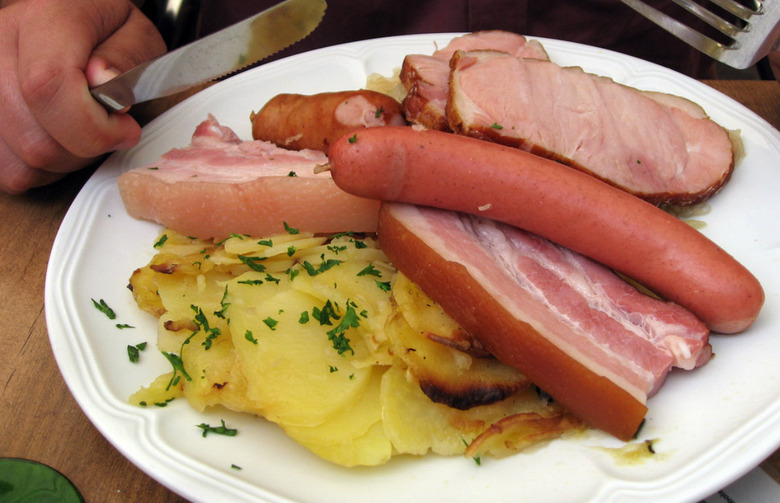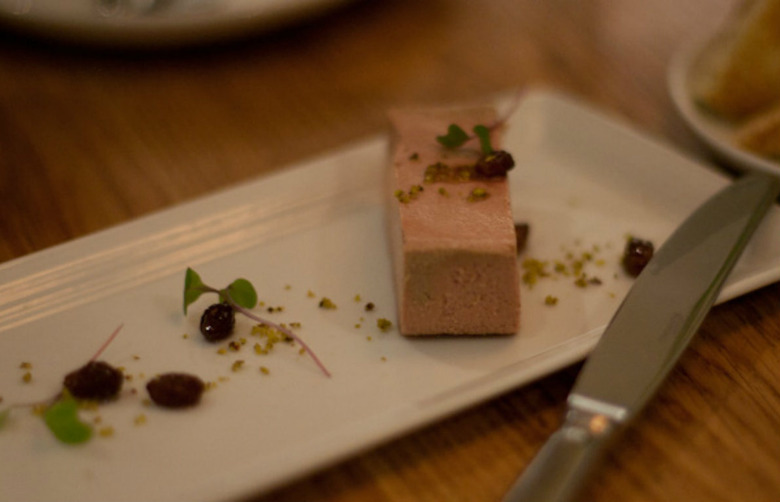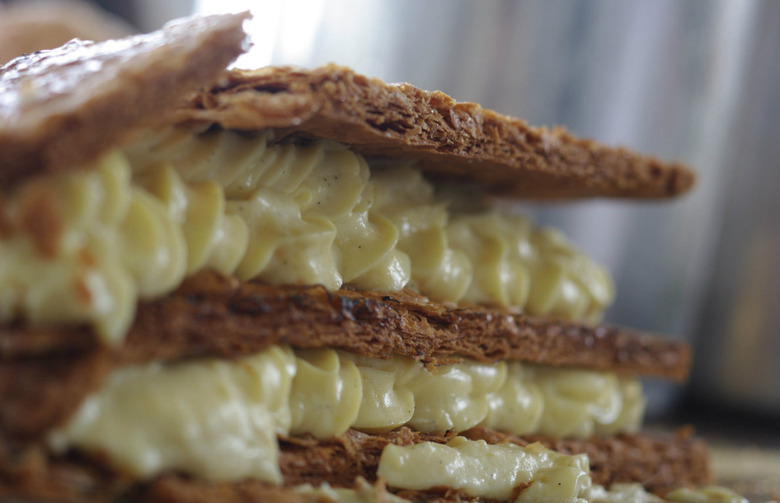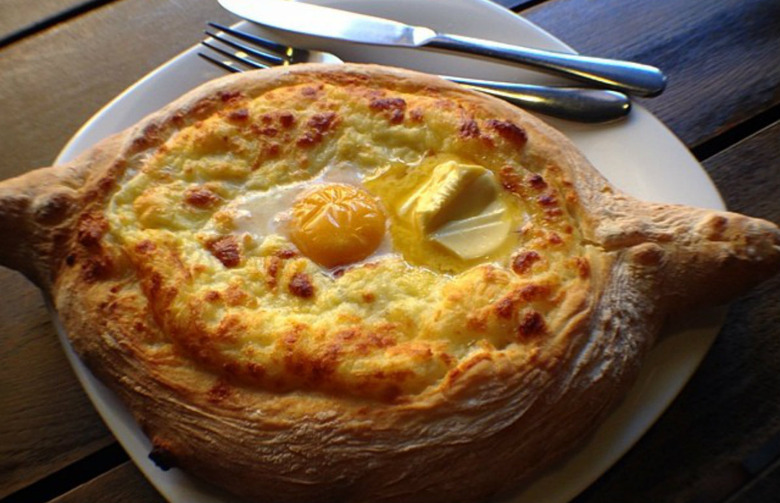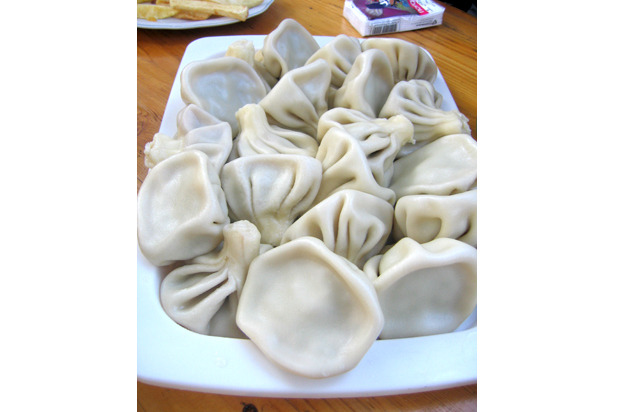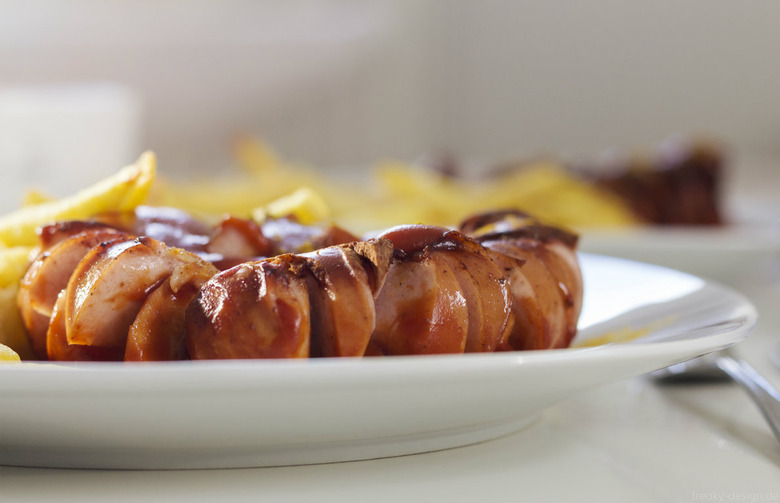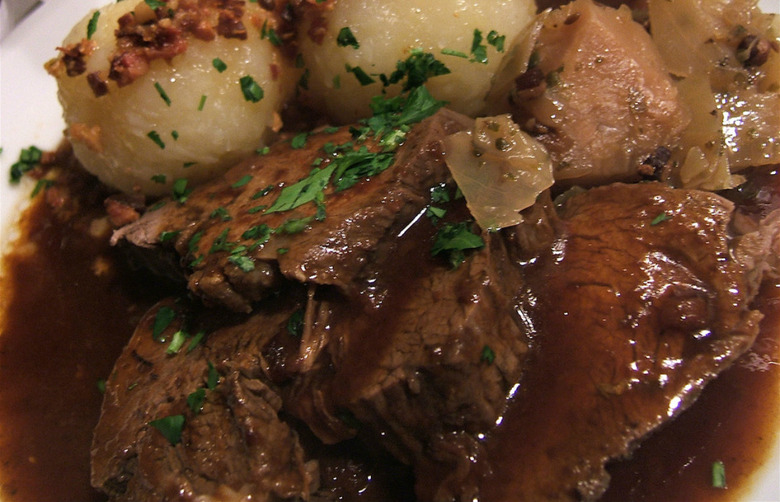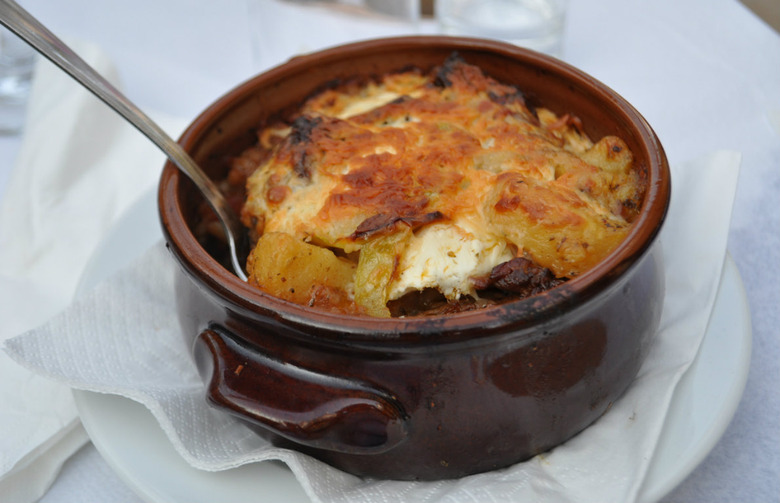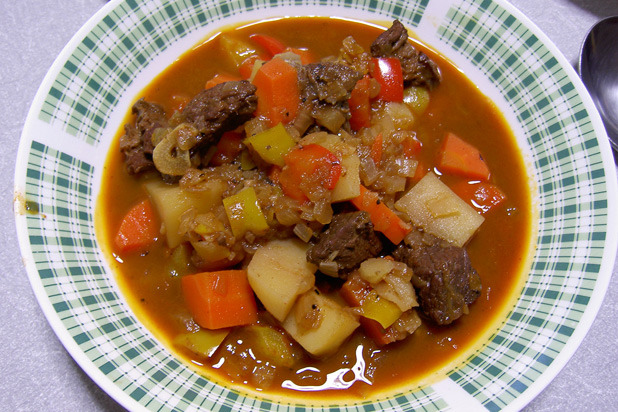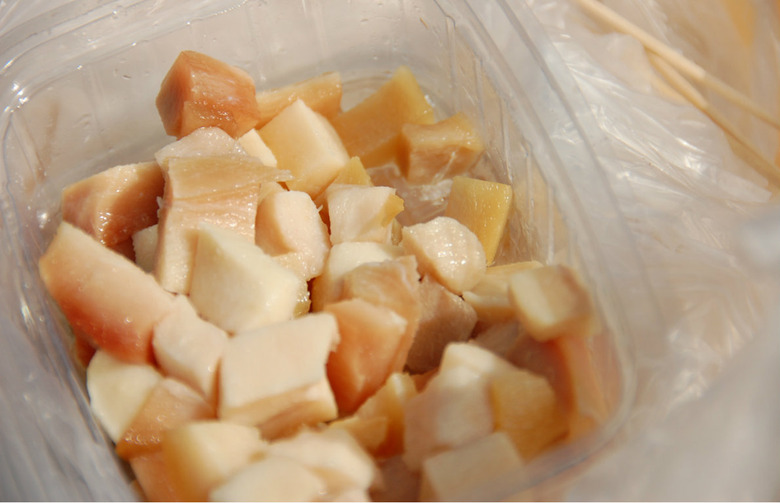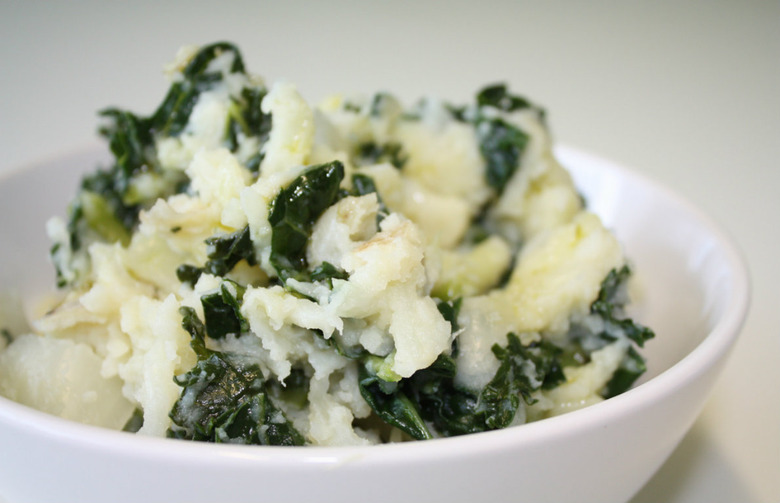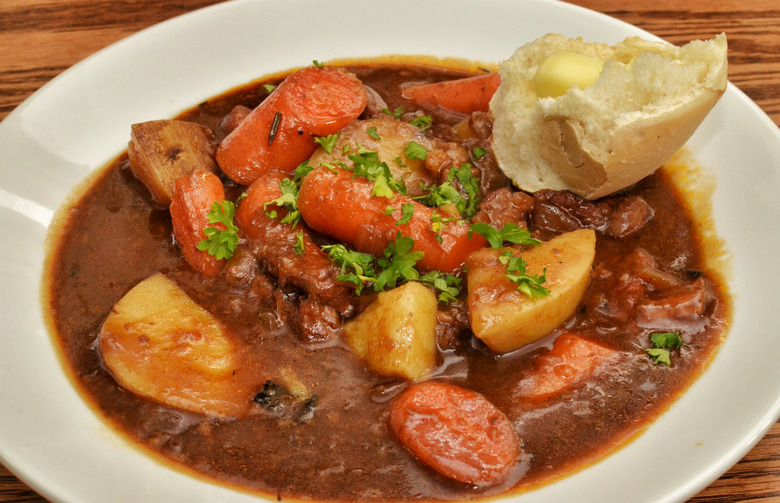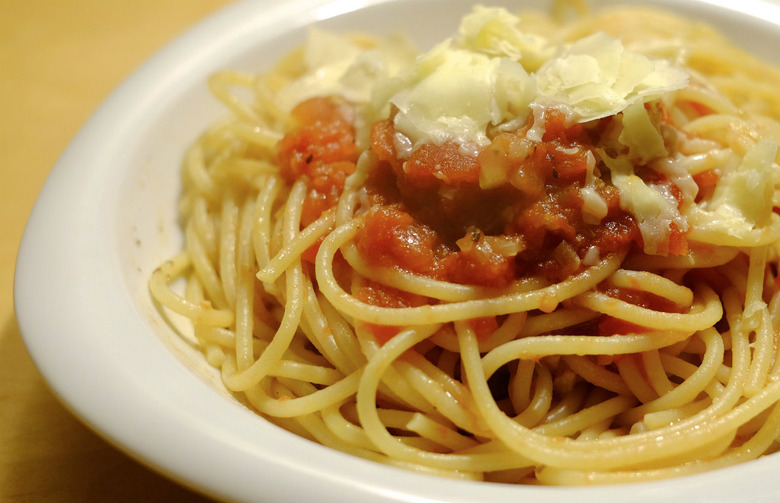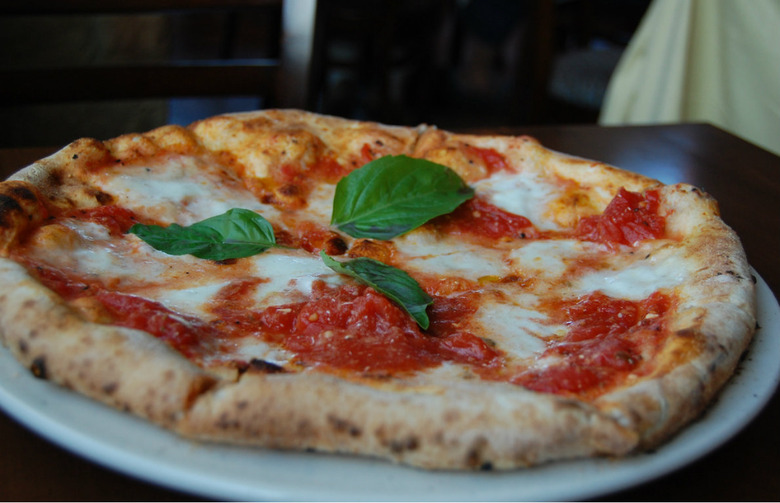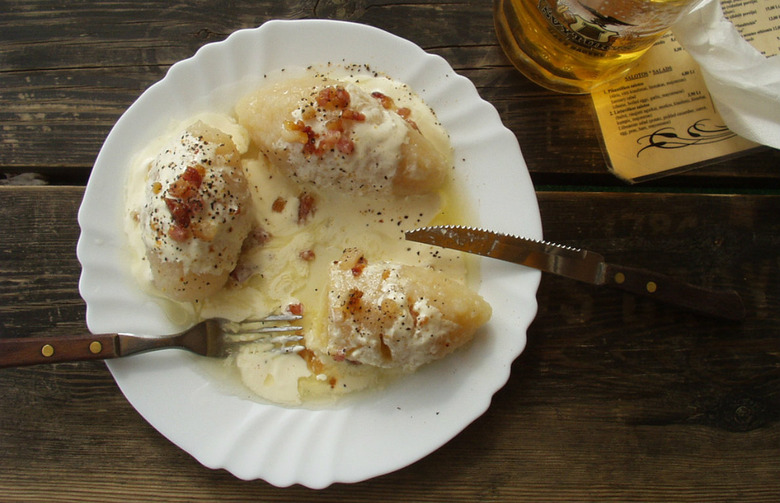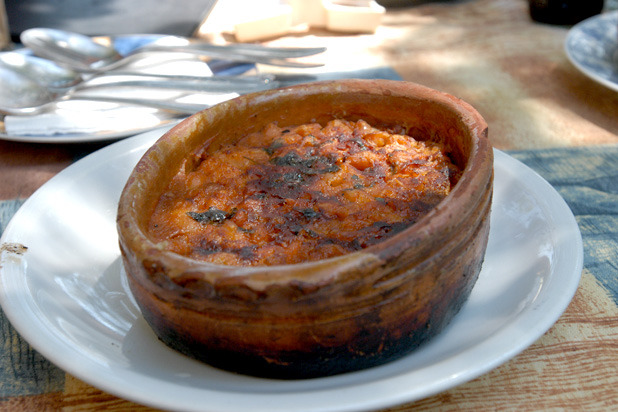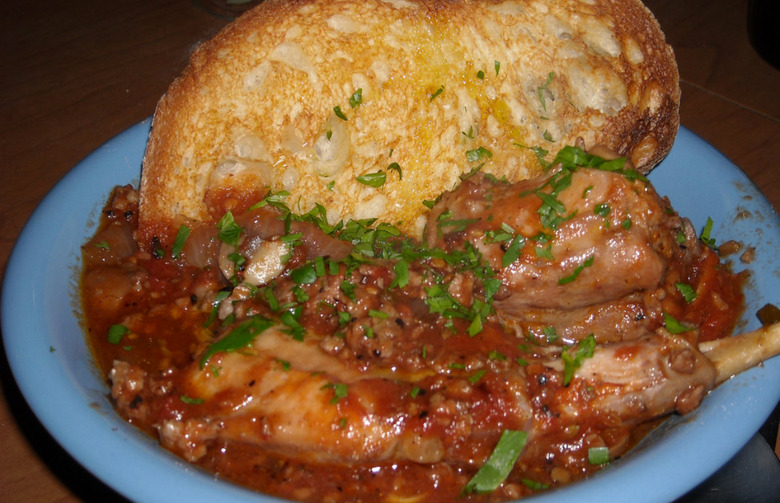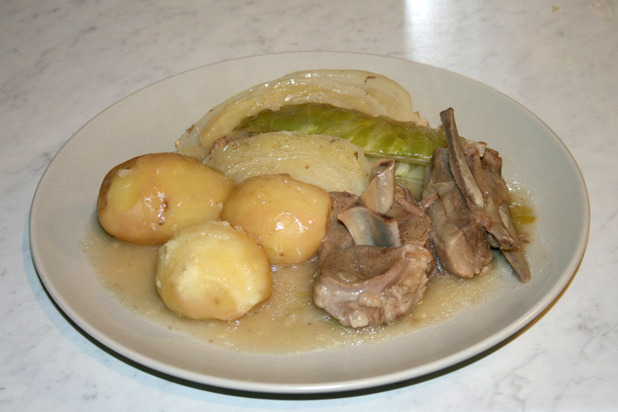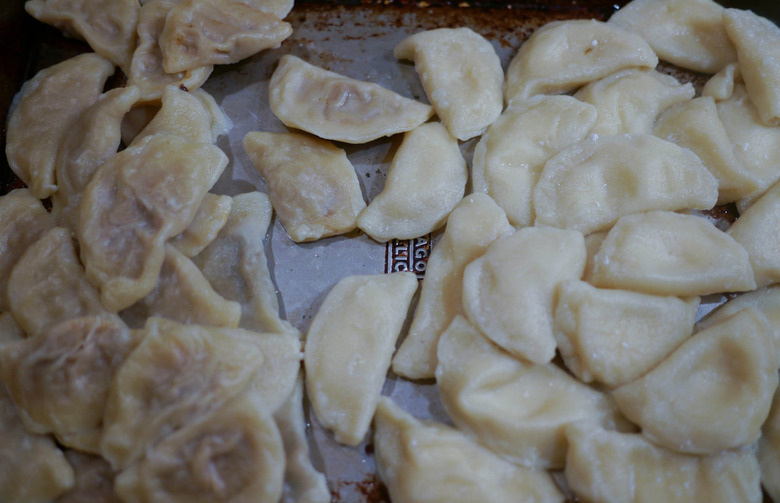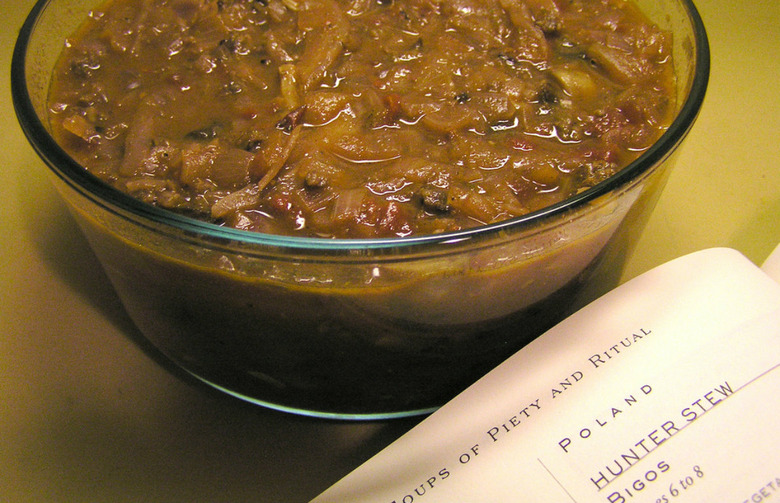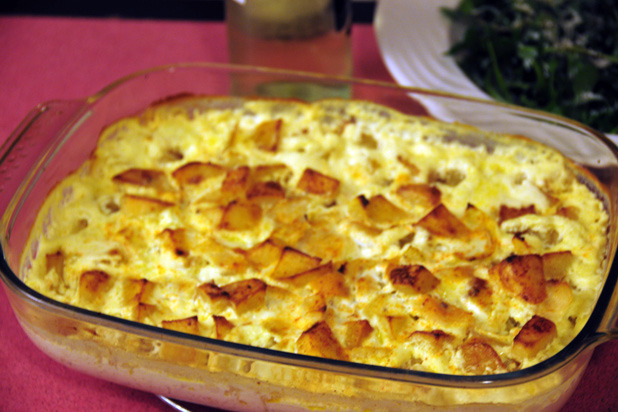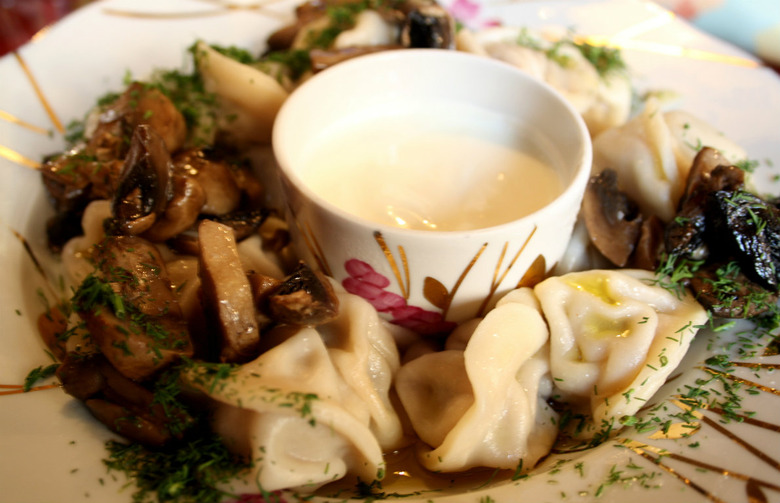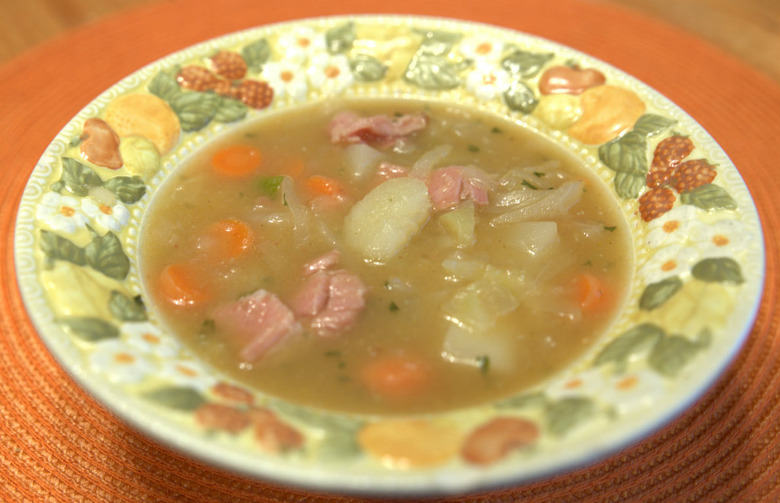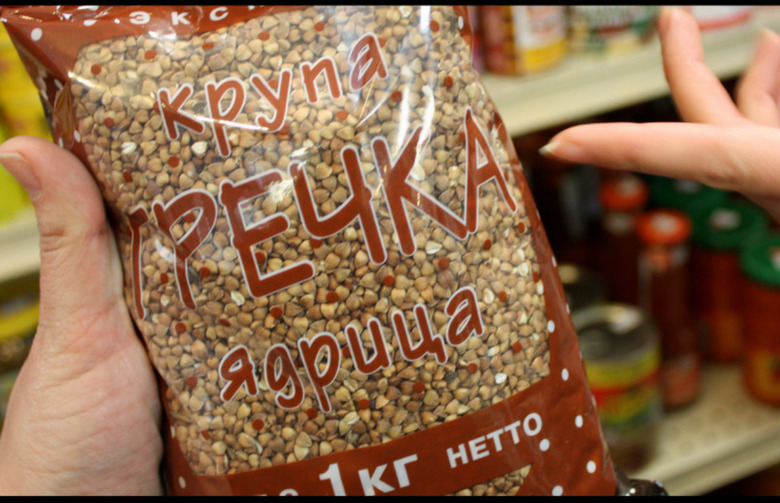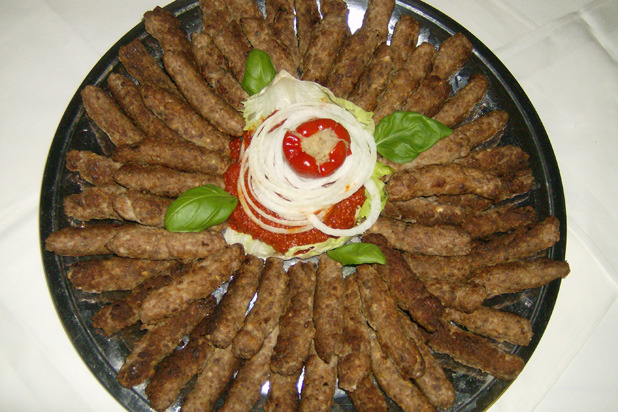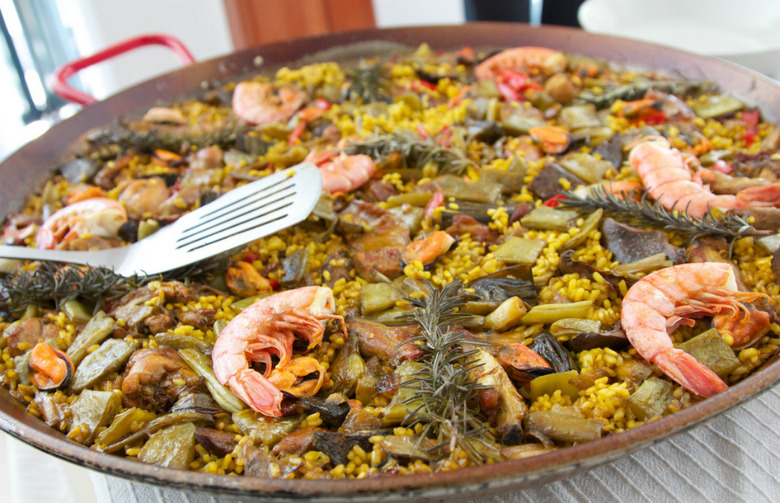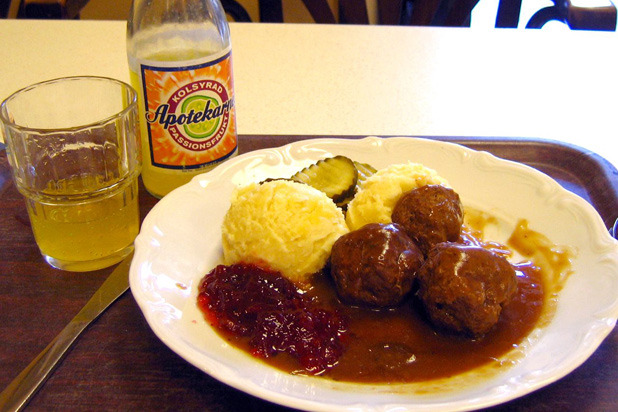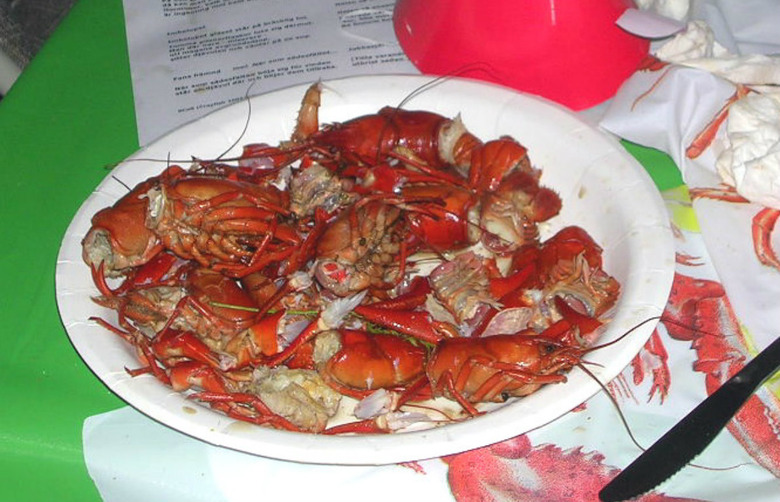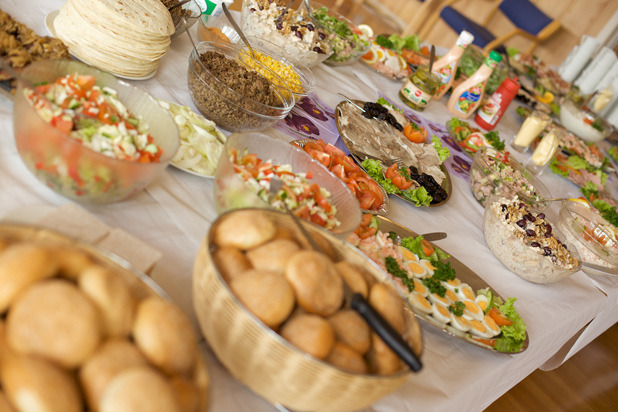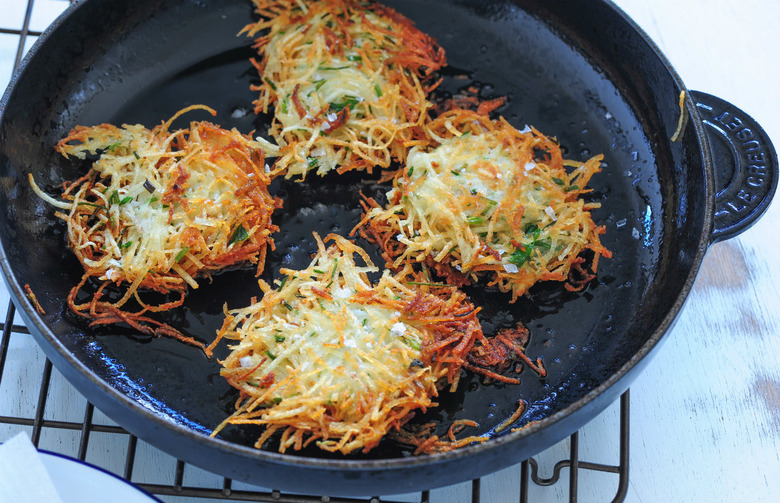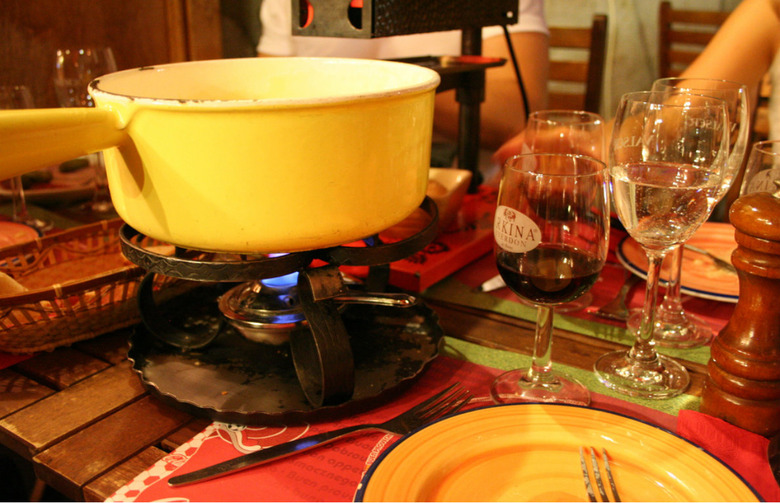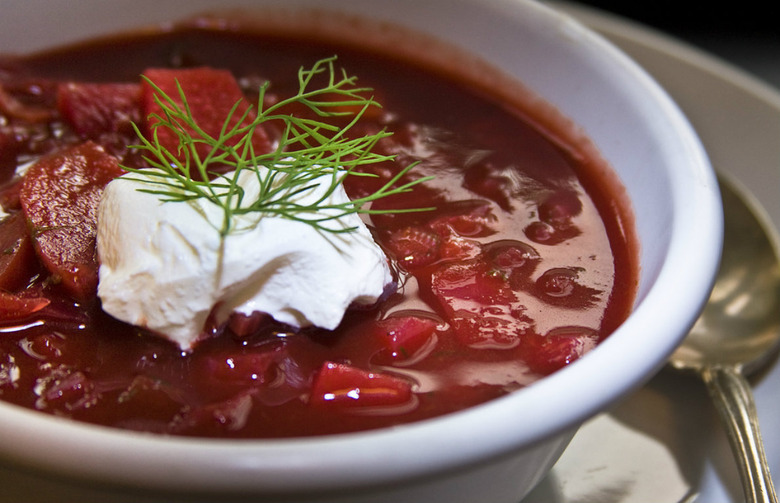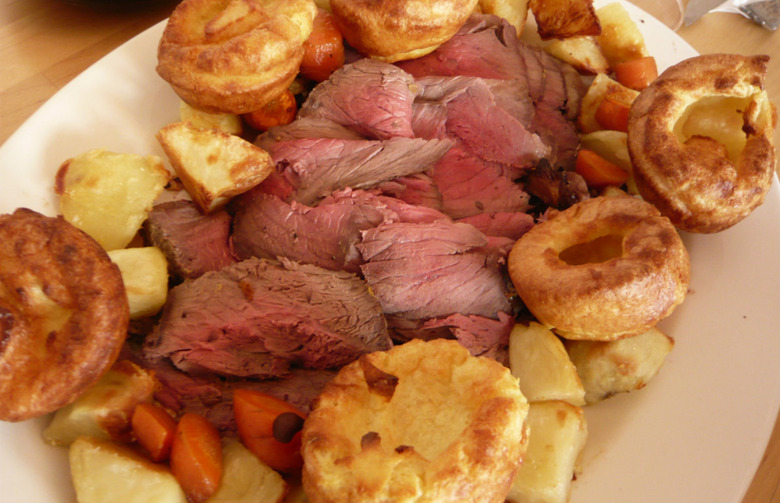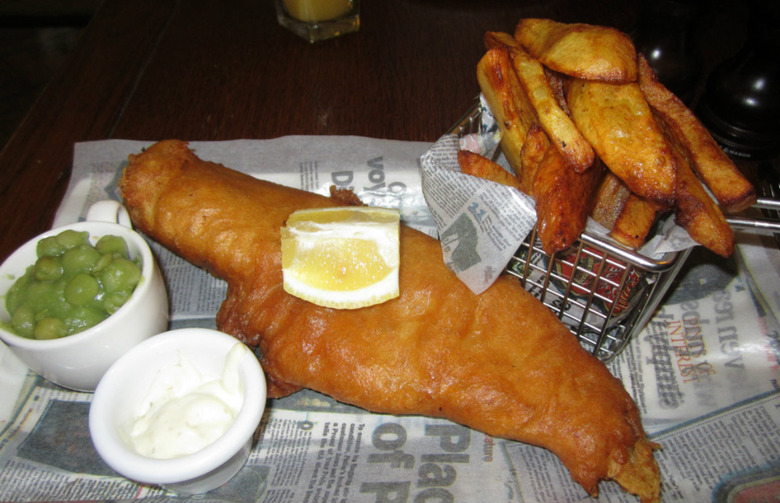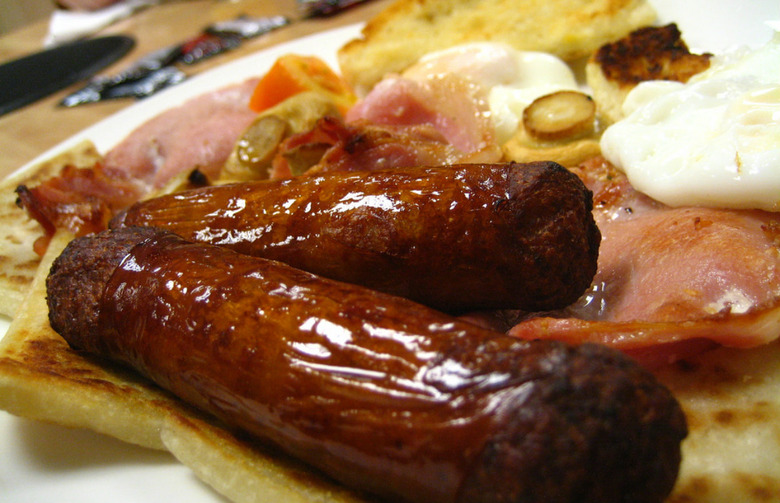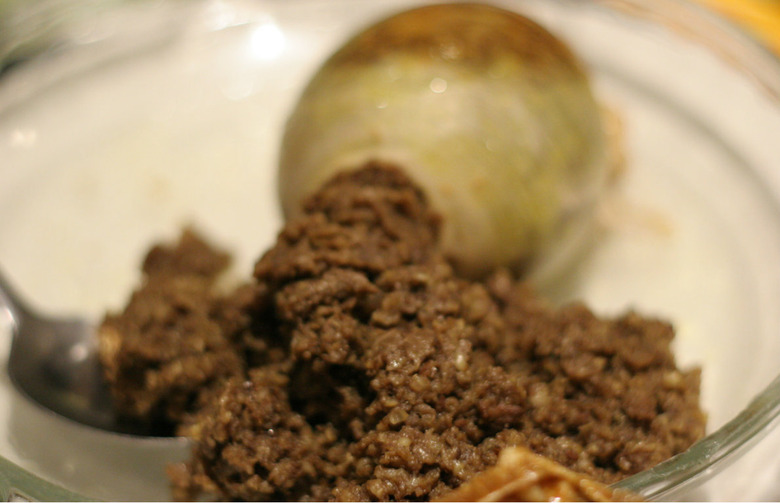150 Iconic Dishes Slideshow: Europe And The United Kingdom
We've all seen The Sound of Music. And while brown paper packages tied up with strings are nice, schnitzel maybe one of Austria's real favorite things. Of course, examples of classic schnitzel exist throughout Austria, and specifically Vienna. One lauded non-touristy place to find schnitzel (as well as great beer) is Kolonitz-Beisl.
Austria: Tafelspitz
Tafelspitz is a thinly sliced boiled beef dish served with fixings like potatoes, apples, and horseradish. It was beloved by Franz Joseph I, onetime emperor of Austria — it was said that his private table was never to be without it. The widely accepted "best" in Vienna can be found at Plachutta.
Belarus: Draniki
This potato pancake, a favorite among locals, is typically served in either a savory (with sour cream) or a sweet (with apple sauce) variety. One of the best renditions can be found at the Grunwald Café in Minsk, a slightly pricier restaurant with a mix of Medieval-inspired fare and modern European cuisine.
Belgium: Moules-Frites
Mussels and fries are savory and succulent with the right amount of crispy and salty. The dish is commonly cooked with ample butter, white wine, and herbs. And while they're found in abundance throughout Belgium, many locals agree that the best in Brussels are found at Chez Léon, Aux Armes de Bruxelles, and Museum Brasserie.
Bosnia: Bosanski Lonac
Although a popular Bosnian specialty, the recipe for this dish is difficult to categorize, as almost every rendition is prepared differently. Loosely speaking, it is a meat stew featuring a variety of vegetables. One of the best versions can be found at Inat Kua in Sarajevo.
Czech Republic: Roast Pork with Dumplings
You won't have trouble finding this traditional dish when visiting the Czech Republic, especially Prague. It pairs together three staples: cabbage, pork, and dumplings, and is typically served with a side of sauerkraut. (Plus, a nice stein of beer to wash it all down.) Some of the best classic Czech food can be found at Olympia.
Czech Republic: Svícková
This classic Czech meal is made of beef sirloin served with bread dumplings and boiled in cream. It's herbed and spiced, and served with a sweet side of cranberry sauce. The most lauded example of svícková in Prague can be found at Café Imperial.
Denmark: Frikadeller
These flat, pan-fried meatballs are extremely popular in Denmark, and are usually served for lunch or dinner with boiled potatoes, cabbage, and gravy. The meat is mixed with onions, egg, breadcrumbs, and seasonings before pan-frying in pork fat or butter. Frikadeller have been in many a Danish buffet line, but are considered best eaten at Copenhagen's Restaurant Kronberg.
Estonia: Mulgikapsad
A homey and hearty meal, this stew is made with sauerkraut and potatoes that are cooked with traditional sausages, bay leaves, mustard, cream, chives, and caraway seeds. Traditional restaurants in Tallinn are the best places to find this national Estonian dish (if you can't find an invite to a private home), like Vanaema Juures.
France: Crêpes
Whether sweet or savory, crêpes are quintessential street treats in Brittany (their homeland), Paris, and throughout France. Stroll down cobblestoned streets where travelers can find some of the best crêpes from vendors in chic neighborhoods and tourist sites alike. One of the most authentic brick-and-mortar crêperies is Crêperie Bretonne in the French capital.
France: Pot-au-Feu
Pot-au-feu is a ubiquitous national dish with any number of variations, from meat selection to vegetables and seasonings, but its core remains the same — it's a hearty meat stew with oxtail or beef, sausage, carrots and leeks, salt, cloves, and pepper. Found mostly in homes and traditional eateries, it's served with Dijon mustard on the side. Find one of the best versions at L'Assiette in Paris' 14th arrondissement.
France: Choucroute Garnie
Choucroute is sauerkraut in the Alsatian style, almost always served garnie (garnished) with various sausages and inexpensive, often fatty, cuts of pork. It is a substantial dish, typical fare in brasseries all over France, where it is traditionally accompanied by riesling or other white wine from Alsace. Maison Kammerzell in Strasbourg offers a definitive version.
France – Pâté de Foie Gras
Pâté de foie gras is made of fattened duck or goose liver, and it's one of the most indulgent and beloved delicacies in France. While foie gras is served in a number of ways, pâté, which is spreadable and formed into a terrine, is the most famous and widespread version. La Tupina in Bordeaux serves one of France's most mouthwatering examples.
France: Mille-Feuille
Meaning "a thousand leaves," mille-feuille pastry is ultra-thin sheets of puff pastry layered with various ingredients. There are savory versions, but the popular dessert, also called a Napoléon, is filled with light pastry cream, and may be topped with whipped cream, chocolate, nuts, or powdered sugar. Try ones from Pain de Sucre or Boulangerie Julien, both in Paris.
Georgia: Khachapuri
Indulgent and comforting, khachapuri is cheese-filled bread often topped with an egg and butter. Variations abound, of course, as the dish is like a blank canvas for different flavors like potatoes, various cheeses, and sauces. Some say it's best sampled from the seaside Green Palm restaurant in Batumi.
Georgia: Khinkali
These Georgian dumplings are filled with mixtures of raw, spiced meats and various vegetables and thenboiled, trapping the meat's juices inside as the filling cooks. The trick is to eat these without spilling the precious liquid inside. Zakara in Batumi is said to have the best khinkali in town.
Germany: Currywurst
Every German's guilty fast-food pleasure, currywurst is widely eaten among all classes in Berlin. It consists of hot pork sausage chopped into slices and seasoned with curry ketchup. Today's obsession started with German housewife Herta Heuwer who, in 1949, got her hands on ketchup and curry powder, mixed them together, poured it over cooked sausages, and started selling it on the street to construction workers. In Berlin, most roads lead to Curry 36.
Germany: Sauerbraten
Sauerbraten, a hearty German pot roast marinated in vinegar and spices before cooking, is served with red cabbage, potato dumplings, or spaetzle. A very popular dish, it's found on street corners and in home kitchens. Sample authentic sauerbraten in Berlin at the upscale Lutter & Wegner.
Greece: Moussaka
This is a dish of eggplant and tomatoes cooked with minced meat, topped with a cheesy, creamy sauce, and then baked. Comforting and hearty, it's an easy favorite for home cooks and in restaurants throughout Greece. Its origins are still unknown, though it's accepted that it dates back to a dish from the 1200s. Vlassis is one of the most popular small taverns in Athens serving a textbook version.
Hungary: Gulyás
Gulyás, which we render as goulash, is not a stew but a rich soup made with meat (like veal, pork or beef), noodles, and vegetables, and regardless of variations, always including potatoes and paprika. Gulyás is served in traditional and modern restaurants throughout Hungary, but one of the most highly recommended versions is at Dió in Budapest.
Iceland: Hákarl
Hárakl is a notorious acquired taste — a food adventure, if you will. It's made of shark buried in sand and gravel to ferment and then hung to dry for four to five months before being cubed and served cold. Novices are encouraged to steel themselves before tucking in, but it's still found at street stalls, supermarkets, and at places like Sægreifinn in Reykjavik's old harbor.
Ireland: Colcannon
The main ingredients in Irish colcannon are mashed potatoes, kale, and plenty of butter and cream. Cabbage and other greens sometimes sneak in, as do scallions, leeks, or onions (though then it's sometimes called champ). On special occasions, small prizes or coins are sometimes hidden in colcannon for luck. Try some at Dublin's Oliver St. John Gogarty, where it is served with farmhouse sausage.
Ireland: Irish Stew
Irish stew, which dates back to the early 1800s, is usually made of lamb or mutton with potatoes, carrots, onions, and parsley, though traditionalists argue that only mutton is correct and that carrots should be excluded. Head to Ireland's oldest public house, The Brazen Head in Dublin to try authentic Irish stew.
Italy: Spaghetti al Pomodoro
It may sound simple — a sauce made of fresh tomatoes, basil, olive oil, and garlic — but Italians often consider salsa al pomodoro, made correctly and with the best raw materials, to be among their nation's finest culinary achievements. Try it at Rome's Felice a Testaccio.
Italy: Pizza Margherita
This classic was invented in 1889 by a Neapolitan pizzaiolo, who topped a pizza with red tomato sauce, white mozzarella, and green basil, mimicking the colors of the Italian flag, to honor a visit to Naples by Queen Margherita. Excellent versions are made inthe city at Pizzeria Starita, Da Michele, and Pizzeria Salvo; try them all and choose a favorite.
Lithuania: Cepelinai
Soft and light, these potato dumplings are filled with minced meat, cheese, or mushrooms and are commonly served with sour cream and pork rinds on the side. One local favorite spot to try them in Vilnius is emaiiai.
Luxembourg: Judd mat Gaardebounen
The tiny nation of Luxembourg is not afraid of big, bold flavors like those found in their national dish — smoked pork collar with fava beans. The pork is cooked with leeks, carrots, and celery for hours before being served with bacon and the beans. While many of Luxembourg's restaurants are French and Italian, find judd mat gaardebounen in Luxembourg City at Mousel's Cantine.
Macedonia: Tavce Gravce
This spicy dish of beans and peppers is not a quick dish. First, the beans need to soak for three hours and, traditionally, they are then baked long and slow in earthenware along with peppers, onions, and other seasonings. Restaurants in Skopje, like Beerhouse An serve this dish along with traditional and contemporary Macedonian foods.
Malta: Stuffat Tal-Fenek
The Maltese like to eat this tomato-based rabbit stew with spaghetti. Traditionally a dish eaten at home, it is very hearty and perfect for entertaining. When visiting this small island nation off the southern coast of Italy, try stuffat tal-fenek at United Bar and Restaurant on Mgarr's Main Street.
Netherlands: Stamppot
Norway: Fårikål
Cooked for several hours as a casserole, this essential Norwegian dish may be simple in its ingredients — mutton, cabbage, pepper, and a little wheat flour — but it's bold in flavor. Try it at Kroa in Longyearbyen.
Poland: Pierogies
Nothing is more Polish than a pierogi. Whether they're baked, fried, smothered with butter or onions, filled with meat, potatoes, or even fruit, the nation's number one comfort food is sold and served everywhere. For a classic pierogi experience, head to Zapiecek Polskie Pierogarnie just off the main square in Krakow.
Poland: Bigos
A take on sauerkraut stew, Polish bigos consists of meats like ham, bacon, sausage, beef, veal, or venison with fermented cabbage. Typically eaten with a slice of rye bread, this dish varies from home to home, and from restaurant to restaurant. Try this hearty stew from Restauracja Pod Baranem in Krakow.
Portugal: Bacalhau com Natas
Portuguese cuisine is rife with seafood, and one of its most versatile ingredients is bacalhau, or salted cod. Arguably the most common preparation is bacalhau com natas, made with potatoes, onions, and cream. It is particularly well done at Tulhas Bar & Restaurante in the UNESCO protected Sintra, outside of Lisbon.
Portugal: Pastel de Nata
A sweet breakfast treat or a dessert, natas are popular with, we'd venture to say, every last Portuguese local. They are eggy, creamy, and rich while not being too heavy and the ingredients are simple: just egg, flour, butter, vanilla, and milk. They're so small, it's one bite and they're gone. Get in line at Pastéis de Belém in Lisbon.
Romania: Mamaliga
Similar to polenta, mamaliga is a porridge made of cornmeal simmered with sheep's cheese and bacon. Locals and visitors can find this hearty old-style dish — one that's starting to make its way into more modern Romanian cuisine — at Caru' cu Bere in Bucharest.
Russia: Pelmeni
These classic dumplings are served as a quick snack or small meal from street stands and fancier establishments alike. Pelmeni can be found at Moscow's Café Pushkin in both the fancier and café-style rooms.
Russia: Shchi
Cabbage and sauerkraut make this soup a bit tangy, so it is often called "sour shchi." The dish dates all the way back to the ninth century. It's been said that the traditional version at the cool, modern Chekhov restaurant in St. Petersburg is one of the best.
Russia: Kasha
Kasha, a buckwheat porridge similar in consistency to oatmeal, has a thousand-year-old history in Russia. It's part of all kinds of savory dishes, like buttery buckwheat salads and pilafs topped with meats or vegetables. Try this historic snack from one of Moscow's Soviet-style milk bars, like the chain Moo Moo.
Serbia: Cevapcici
Cevapcici are grilled kebabs of minced, seasoned meats, traditionally served with pita-like flatbread and chopped onions, along with sour cream, clotted cream, or cottage cheese. This comforting dish is served at the classic Belgrade restaurant Frans.
Slovakia: Bryndzové Halušky
Almost like a Slovakian version of gnocchi, bryndzové halušky are potato dumplings served with gooey cheese and bacon on top. Try it from a local favorite restaurant in Bratislava called Prasna Basta.
Spain: Paella
With historical roots in mid-19th century Valencia, paella is, contrary to popular belief, not traditionally made with seafood. It started as a dish of the countryside, whose main ingredients were rabbit, chicken, two or three kinds of beans, and often snails. Saffron is used to flavor many versions. For real paella, try Restaurante Levante in Benisanó, just northwest of Valencia.
Sweden: Köttbullar
A blend of beef, pork, and veal, these meatballs contain finely chopped onions and are soaked in milk until they are cooked and served with potatoes, gravy, jam, and a pickled cucumber. It may surprise you to find that the Stockholm-based debate over the best in town include the chic Bakfickan inside the opera house, and Pelikan, but not Ikea.
Sweden: Kräftskiva
This traditional summertime eating and drinking extravaganza, based around fresh little crayfish consumed by the potful, occurs in the Nordic countries during August, when the small crustaceans are in season. Since the act of eating crayfish is a tedious endeavor, there's lots alcohol on hand to pass the time. These "crayfish parties" are found all over Sweden in August, but try Ulkrisdals Wardshus in Stockholm.
Sweden: Smörgåsbord
This is a collection of delicacies meant to be eaten in a very specific order (and even on separate plates). The offerings include herring dishes, smoked fish, and meatballs. For an authentic smörgåsbord experience, head to the The Veranda Restaurant at the Grand Hotel in Stockholm.
Switzerland: Rösti
Made sweet or savory (depending on mix-ins), rösti is basically a potato cake, consisting of shredded potatoes, cheese, and butter. Grab a stein and a few of these at Rheinfelder Bierhalle in Zurich.
Switzerland: Fondue
Perfect for two or for a group, fondue is a pot of gooey, melted cheese served over a lamp or a small fire. Spear bread cubes with long-stemmed forks and dip them into the cheese for great flavor. Careful: If you drop your cube into the cheese, the next round of drinks is on you. Au Vieux Carouge is said to have some of Switzerland's top pots.
Ukraine: Borscht
With origins in Eastern Europe, this deep-hued soup contains beetroot and tomatoes. It can be served both hot and cold and is often topped with a dollop of sour cream. Puzata Hata in Kiev has some of the city's best.
U.K.: Chicken Tikka Masala
It may be Indian, but chicken tikka masala is everywhere in the United Kingdom. The enormous Indian population in the U.K. has influenced the culture and cuisine so much that this spiced, tomato-based curry, served over rice and with sides like naan bread and raita, is now considered "Britain's national dish." Try it at London's Barbur Brasserie.
U.K.: Sunday Roast
Hearty and meant to be shared with family and friends, a traditional English Sunday roast is a multisensorial feast. One plate consists of roasted meat (typically beef, sometimes lamb), roasted or mashed potatoes, stuffing, vegetables, and Yorkshire pudding, all topped with gravy. Some popular Sunday roast destinations in London include Bull & Last, The Duke of Wellington, and Harwood Arms.
U.K.: England: Fish and Chips
Crispy, fresh, and doused with vinegar or lemon juice, classic fish and chips are a favorite London comfort food, served in newspaper wrapping in pubs and chip shops, or on fine china in high-end eateries. It consists of beer-battered fish, typically cod or haddock, fried in a puffy batter, with crispy chips (thick fries). Hanbury's in Toquay and Quayside in Whitby were just crowned fish and chip winners at The National Fish and Chips Awards in the United Kingdom.
U.K.: Northern Ireland: Ulster Fry
Ulster fry is an Irish breakfast of champions with egg, bacon, sausage, white or black pudding, fried tomatoes, and a generous slice of soda bread. Sometimes you'll find accompaniments like mushrooms, pancakes, or beans, but regardless of what shows up on the plate, the Belmont Café in Belfast serves one of the best.
U.K.: Scotland: Haggis
Not for the finicky eater, haggis is a Scottish delicacy made with sheep's heart, liver, and lungs minced and cooked with onions, oats, spices, and mutton fat that simmers together for a good three hours in a sheep's bladder. Side dishes vary, but are traditionally turnips and potatoes, washed down with a shot or two of Scottish whisky. One of the best places to try this acquired taste, is Macsween of Edinburgh — named the "protector of the national dish."
150 Iconic Dishes from Around the World
Originally published on February 6, 2012.
See the rest of the world's 150 iconic dishes...


